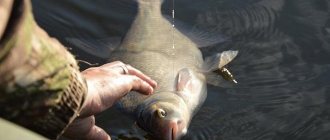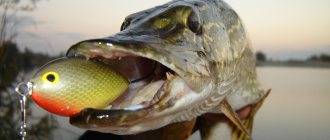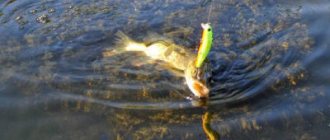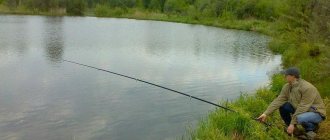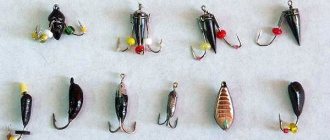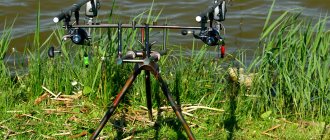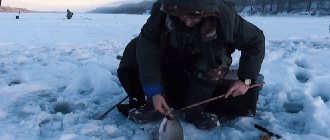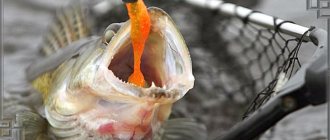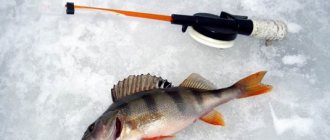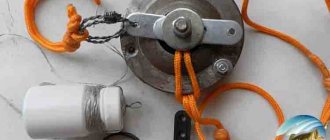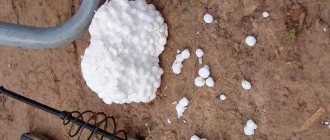Biting calendar
| January | February | March | April | May | June |
| — | — | — | + | +++ | + |
| July | August | September | October | November | December |
| +++ | +++ | +++ | + | — | — |
There are several periods of active bream biting throughout the year.
Seasonal Fishing Guides
| In the spring, fish bite well before spawning. It is during this period that trophy specimens are caught. |
| The best time in summer begins with the flowering of winter rye. |
| A good bite continues until mid-autumn, when bream gathers in schools and rushes to their wintering grounds. The colder it is, the deeper the bream descends. |
| In winter, good fishing occurs on first ice, as well as at the end of winter or beginning of spring, when the melt waters go under the ice. |
Influence of Moon Phases on Bream Biting | Anglers' Observations
Few people know, but lunar phases also influence the activity of bream.
The most active Bream is seen precisely during the New Moon, as well as during the Full Moon.
According to the observations of anglers, we can conclude that Bream activity increases significantly when the moon rises, this is another important reason to go for bream at night, and not during the day in the heat and heat.
5 Factors Affecting Fish Biting | Video
Bream habitats
In reservoirs and lakes, bream often change their sites. Flocks move throughout the water area of the reservoir, stopping only in areas with rich aquatic vegetation. Despite the fact that fish love deep places in lakes, bream goes to the edge of the algae to feed.
River bream prefers holes, quiet reaches, pools with a clay bottom, and ledges going into the depths like terraces. Often the fish concentrate far from the channel in bays and creeks with considerable depth. Usually there are thickets of algae nearby where the bottom is muddy.
Bait for bream.
The basic component for feeding bream is usually any type of cereal, boiled peas, with the addition of ready-made proprietary mixtures and flavorings from different manufacturers. It is important to note that when preparing bait for bream there should be no lumps, the structure should be loose. All additional components of the bait stick to the cereal mass. Boiled cereal serves as a binding “glue” base; the impregnated wheat particles are heavy and are not so susceptible to erosion by the current; they also provide a sufficient cloud to attract fish. Thus, the bait will be scattered along the bottom and the bream will have to collect it grain by grain, lingering in the fishing zone, which is what we need.
Bream spawning
The fish reaches sexual maturity at the age of 5-8 years. By this time, the body length is 30 cm. The mating season for bream occurs within a month, when the water temperature reaches 12-15 degrees. The depth of the spawning ground is 0.2-2.5 m. But even in one river or reservoir, some individuals begin to spawn at the moment the willow leaves bloom, while others spawn only at the end of the flowering of the gardens. Bream lay their eggs in places flooded with spring water directly on the vegetation. If the mating season in a reservoir goes smoothly for 10-14 days, then after two weeks you can start fishing for bream.
During spawning, it is useless to hunt this valuable fish. For about two weeks, the bream stops feeding. But it is also important to remember that fish love peace. Will not take bait in noise. It is not for nothing that in ancient times in some settlements where bream were caught, it was forbidden to ring church bells. The noise scared the fish and could deprive an entire village of food.
Spawning period
The spawning period is directly related to climatic conditions. If we take the middle zone, then bream can begin to spawn in mid-May or June. If we take into account warm regions where the water heats up somewhat faster, then this fish can spawn as early as April. Bream perfectly feels how the water temperature rises. As soon as it reaches a certain point (+11°C), the fish immediately begins preparing for the breeding process.
As for Ukraine, bream spawning starts in mid-April and can last up to 5-6 weeks. In Belarus, bream starts spawning a little later. In any case, the most important indicator of the onset of spawning is water temperature.
Regardless of the region in which the bream is located, the spawning period can last up to 1.5 months. The end of spawning occurs when the water warms up to +22°C.
If you constantly measure the water temperature, you can clearly determine the beginning and end of bream spawning. At the same time, in each reservoir the water is heated differently, depending on the size of the reservoir and the presence of deep sources. This factor indicates that bream can spawn differently in different bodies of water, regardless of the climatic zone. Although, in this case, the shift in the moment of the beginning of spawning is insignificant.
Finding a fishing spot
When looking for a place to catch bream, you should remember that the fish does not like to feed at depth in spring and summer.
It approaches the coastal zone, especially when there is a strong wind and there is a breaking wave. Hitting the steep shore, the wave washes away the soil and attracts a flock. River bream should be looked for in a quiet current with a depth of at least 2.5 m. The fish is found on the reverse current, near holes, on wide reaches, near creeks. The ideal period for fishing is considered to be 2 weeks before spawning and the same amount after the end of the mating season. The spring bite is considered the most productive. If you are fishing for bream from a boat, then using an echo sounder is a must. Look for depths of 10-12 to 15 meters. For fishing from the shore, you can use the jig method of tapping the bottom or a marker float.
In winter, bream occupies the deepest sections of rivers and reservoirs. Therefore, ice fishing is usually carried out at a depth of at least 6 m. Depth differences and channel edges are especially catchy. But in the winter months the fish are still inactive. If you plan to go fishing, do it during the thaw.
Suitable baits
Bream is an unpretentious fish when it comes to bait. In nature, it feeds on both plant and animal food, so here the task is greatly simplified. For example, any of the following would work:
- peas,
- corn,
- pearl barley,
- mastyrka - bait based on semolina, potatoes, peas,
- dough,
- maggot,
- bloodworm,
- worms
If you choose the latter option, you should know an important nuance. You need to put a bunch of worms on the hook. This achieves two goals:
- the bait teases well,
- The hook is perfectly camouflaged.
Do the same with maggots or bloodworms. It is difficult for Pisces to resist such an offer. Some fishermen call them "sandwiches." Moreover, the thicker the beam, the more opportunities there are for catching a large specimen.
It happens that the fish are not interested in a particular type of bait. Then you should definitely try their combination. For example, fishing with corn and maggots. This approach has saved more than one fishing trip. It is important not to forget this principle and, in case of failure, offer the bream new options.
In summer, due to the heat and usual caution, the fish are located at depth, away from the shore. In the evening, after the temperature drops, the flock comes closer. You can recognize it by its characteristic bubbles. Somewhere here, near the bottom, food is being eaten. An attentive observer is able to use this feature to track the location of fish and even the approximate size of the school.
Baits and lures
At different times of the year, bream bites on animal or plant baits. In winter, bloodworms will have no competition. A bunch of larvae attached to a jig can tempt large fish. In ice fishing, worms, maggots and dough are actively used.
In the spring before spawning, fish respond well to dung worms, crawlers, leeches, and May beetle larvae. After spawning, bream can be tempted with a bunch of dung worms, maggots, bivalve shells, butter and semolina dough.
Bream has a mouth-tube designed to take food from the bottom. The diet is based on mosquito larvae, freshwater crustaceans, and bloodworms. During the period of preparation for spawning, the fish eats eggs and young fish.
Sometimes fish bite well on young algae.
In summer and early autumn, successful fishing occurs with steamed peas, pearl barley, canned corn, and boilies. Bream also eat cereal seeds, which are washed into water bodies by rain. In late autumn, you can catch fish using animal baits: worms, maggots, bloodworms.
Fishing on the river
When bream begins to bite in the spring on a river (Oka, for example), you first need to choose the right place for fishing. The most productive areas will be those sections of the river where the bottom is clayey or rocky. The fishing depth varies, but not less than one meter - shallower fish simply won’t do! But sometimes the method of fishing in shallow waters works - shell shallows near riverbeds or holes, since bream in windless and warm weather tend to visit shallows and feed there. And the bite will be especially good when there is a breaking wave. Interestingly, fairly large bream can be caught on a sandy beach and at a depth of 0.5 meters. And the right bait, if you don’t get to the bream place, can attract fish. By the way, experienced fishermen determine the presence of fish when bream begins to bite in the spring on the Oka or another river, in shallow places in circles and splashes when the fish rises to the surface. This phenomenon can usually be observed both in the morning and in the evening.
Groundbait and bait
When fishing for bream at any time of the year, bait is required, read the detailed manufacturing manual.
Without it, fish can be caught by chance and in single specimens. It is important not to saturate the flock with abundant complementary food. Therefore, it is better to use ingredients such as breadcrumbs and dry semolina as the basis of the mixture. They form a feeding spot that does not feed the fish. In winter, food bloodworms are successfully used to attract fish to the hole. When catching bream with grain baits, it is necessary not only to include the bait used in the bait, but also to bait it with this grain for several days. For example, fish can get used to steamed peas for 3-5 days. Only after such a long bait do bream bites begin.
Fishing Features
Choosing the right place for fishing is already half the battle . To find it, you should remember the habits of the fish. You can fish both day and night. However, it is worth knowing some features:
- During daylight hours, especially in summer, bream is found in the depths. Various donks are better suited, allowing you to cast the bait far.
- At night it moves to smaller areas of the reservoir. This is where you should wait for him with the appropriate gear. Bream does not like noise, and at night this is especially true. For example, loud speech can be heard over a considerable distance. Even any rustle should be avoided.
Usually bream is found in a school of its own kind, especially for small specimens. By the bubbles you can determine the place where the whole joint is located. This is convenient and increases the chances of success. However, do not forget that there may be only one bream, but it is a trophy one. Seasoned people tend to keep to themselves.
When biting, the bream puts out a float. We need to quickly hook him before he gets suspicious.
Fishing methods
From the ice in winter
A rocker is a bottom tackle for catching bream from under the ice. It has two hooks that can be baited with different baits, for example, floating and sinking.
Fishing with a jig - several ways of winter fishing for bream with a jig at the end of the fishing line.
Winter float rod for ice fishing. Tackle: fishing rod, float, fishing line, lead pellets, leash, jig.
From shore in open water
Feeder fishing is carried out from the shore using spot feeding with a feeder feeder.
An elastic band is a coastal bottom, the design of which includes a large load (a brick, a stone, or less often a large lead sinker), a fishing line with leads and hooks, and a piece of elastic.
Float tackle is the most common and easiest method of catching bream. To rig the fishing rod you will need: fishing line, lead weights, a float with a sensitive tip and a hook with a long shank.
Donka is a non-progressive and unsportsmanlike method of fishing due to the lack of sensitive elements of the gear and the requirement for 100% attention of the fisherman. It is characterized by the rough structure of the equipment and the bite alarm in the form of a bell.
Tackle for fishing
To catch bream, you must meet several gear requirements:
- The line should not be too thick. This will scare away the fish. Suitable size: 0.2−0.25 mm. Of course, bream is a rather big fish, but the lack of fishing line strength will have to be compensated for by other means and experience.
- A similar rule applies to hooks. Cautious fish are able to recognize the trick. Size No. 5 is best. The bait should be well hidden.
- Leash - no more than 0.15 mm.
- If a fishing rod is used, it should be about 5-6 meters. This way the bait is thrown over a long distance.
- When fishing with a feeder, you also need to take into account the habit of the fish to be further from the shore. This is especially important in fast currents.
Fishing weather
The main condition for successful fishing is stable weather. The fish simply need to have time to adapt to constantly changing conditions. If the atmospheric pressure remains the same for two or three days and the wind blows in the same direction, then you can safely go after bream. Precipitation, cloudiness and even wind direction are all secondary and act unpredictably.
It happens that the weather turned out to be simply fabulous. On a winter day it is warm, the sun is shining and even a little warm, and there is no wind at all. In such weather it is comfortable for fishermen, but not for bream. Personally, I have never successfully caught them on such days.
A suitable atmospheric pressure for bream is considered to be in the range of 735-745 mm.
This is good, but it is still more important that the value stays for several days and does not jump. Even if going beyond these limits. You can safely go for bream when large, not heavy snow falls. There should be no gusts of wind, and cloudiness remains throughout the day. Roach, which often coexists with bream, also loves this weather.
Recommended reading: How to look for perch in winter
When to catch bream
You can start fishing for bream immediately after the ice melts. Unlike other fish, bream does not take a break from feeding at this time, and it can already be fully caught. With gradual warming, the bream bite only intensifies, and reaches its peak at a temperature of 12-14 degrees.
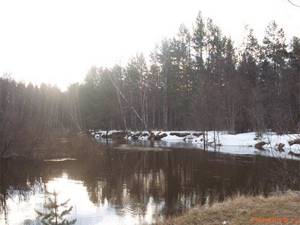
After the temperature exceeds 15 degrees, the bream begins to choose the time of spawning, and biting activity decreases. When it reaches 16 degrees, the bream begins to spawn and at this time it is not interested in food, at least what the fisherman offers. In stable weather of 16-17 degrees, bream spawning takes place in 4-6 days.
If the temperature drops, the bream goes into a stupor and stops spawning until the temperature returns. In general, roughly speaking, bream need 6 days with a temperature of 16 degrees or more in order to spawn.
After spawning, bream again begins to actively feed, but in the coastal zone. After the spawning period, the bream continues for about a week, after which the bream rolls into pits, in which they are caught all summer.
What to feed
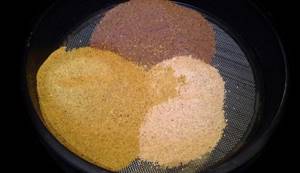
There have been, are and will be a lot of opinions and discussions about bait. It’s not for nothing that they say how many people have so many opinions. Some fishermen argue that winter bait should contain a minimum of aromas. Others (there are fewer of them), on the contrary, believe that odors in cold water should be more powerful. The amount of food should not be too large, otherwise there is a risk of simply overfeeding the bream.
When the depth exceeds four meters, a feeder will help deliver complementary food. If there is 2-4 meters under the ice, you can simply lower the diluted bait into the hole. An exception may be when catching bream in the winter on the current, if the current is noticeable, complementary food is served only with a feeder.
We recommend reading: Catching perch in the spring with a spinning rod
Some fishermen purposefully add small, feeding bloodworms to the bait. How this affects the fish’s appetite is again anyone’s guess. On certain days it can really help, and sometimes it can actually hurt.
My personal opinion is that groundbait is not so much food as it is an appetite enhancer. A kind of spice that, when added, would make you want to eat more. After all, smells affect a person’s appetite, so why shouldn’t they also affect fish? But the composition of winter food should not be made nutritious, after all, this is not summer. It is believed that bream is partial to the smells of coriander, cinnamon, hemp, and sunflower seeds. You can experiment with them. It is especially good if fishing takes place frequently and in the same body of water.
